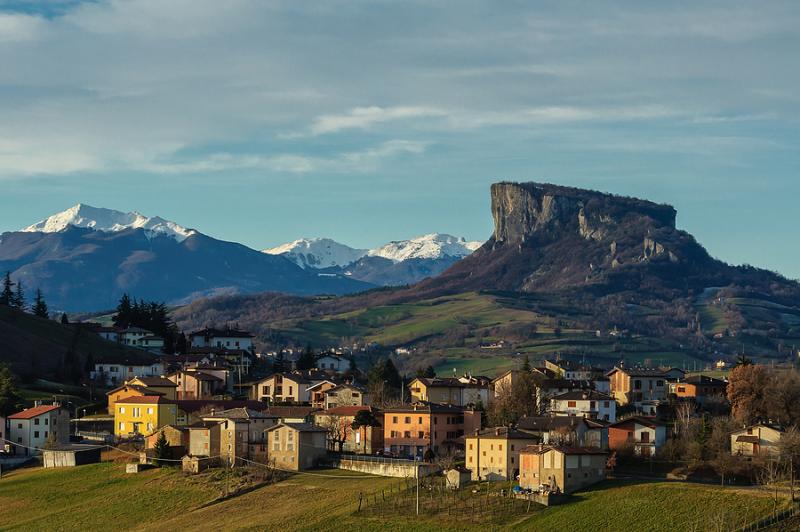The Pietra di Bismantova is not just any mountain. The massive rock’s flat shape is so particular, as it rises, majestic, solitary, from the surrounding plains in Emilia-Romagna, that Dante Alighieri is said to have been inspired by it for the description of the Purgatory in his Divine Comedy.
It is said that ‘the supreme poet’ visited the area in 1306, during a trip from Padua to Lunigiana in Tuscany. Dante imagined the 'steps' taken to enter Purgatory as the steep side of this spectacular limestone cliff. At the time, the rock must have looked even more barren, due to the intensive deforestation taking place in the surrounding area. In recent decades, the abandonment of local agriculture and a different use of forest resources has contributed to reforesting the mountain, and the vegetation has hidden part of the rock and its paths.
In the Divine Comedy, the fourth canto of the Purgatorio has a long description of a climb up the steep rock face of a mountain, resembling the Pietra. It is here that the Pietra di Bismantova is mentioned; incidentally, it is the first written testimony of its name. The Pietra di Bismantova is cited alongside other places with steep cliffs to symbolize how hard it is to climb the mount of Purgatorio.
Vassi in Sanleo e discendesi in Noli,
montasi su in Bismantova e ’n Cacume
con esso i piè; ma qui convien ch’om voli;
dico con l’ale snelle e con le piume
del gran disio, di retro a quel condotto
che speranza mi dava e facea lume. (Purg. 4.25-30)
The Pietra di Bismantova is part of the Apennine mountains of Emilia-Romagna. Its geological formation is so particular that it takes the rock’s name, Bismantova Formation. It emerged from the sea, like the whole Apennine chain, during the lower Miocene era (about 19 million years ago!), and it is still possible, when you look closely, to find marine fossils.
The area no longer features the myriad castles, fortresses and fortifications that once surrounded the mountain; it is however possible to visit a splendid Benedictine monastery, set in the rock at the foot of the mountain. It is the Hermitage of Bismantova, built in the 17th century.
This area is ideal to visit for those who love a slow and tranquil way of travel, with the chance to go on hikes, explore small towns like Castelnovo ne’ Monti, the ‘capital’ of the Emilian Apennines, and an important center for the production of Parmigiano Reggiano.



